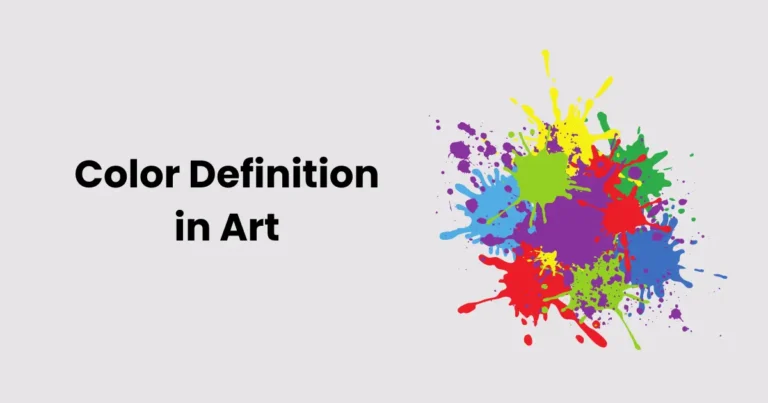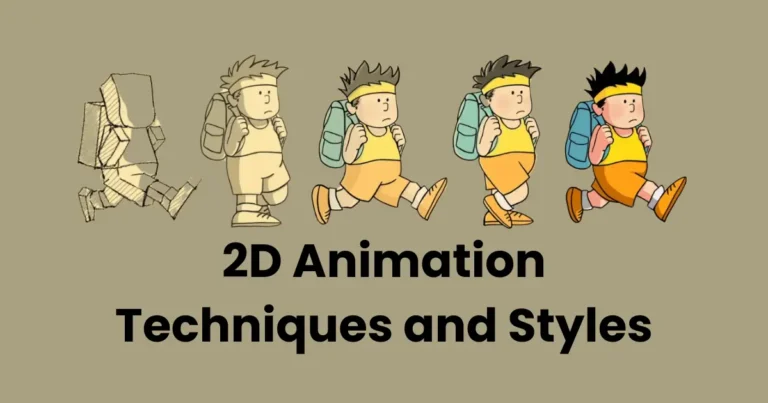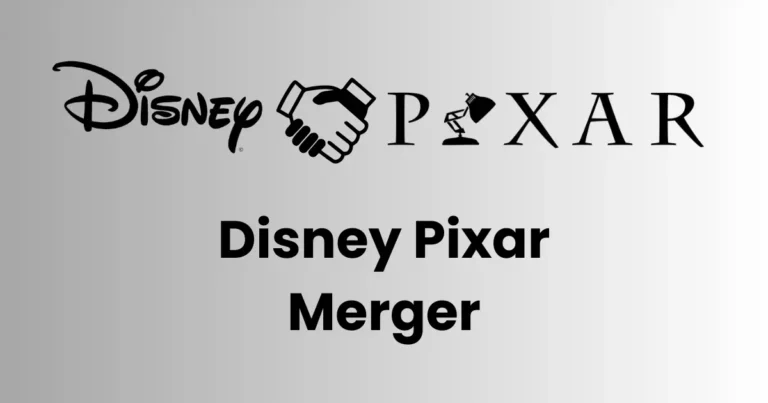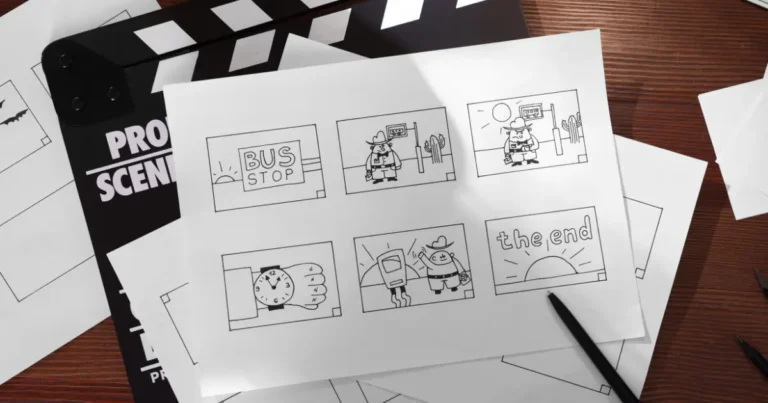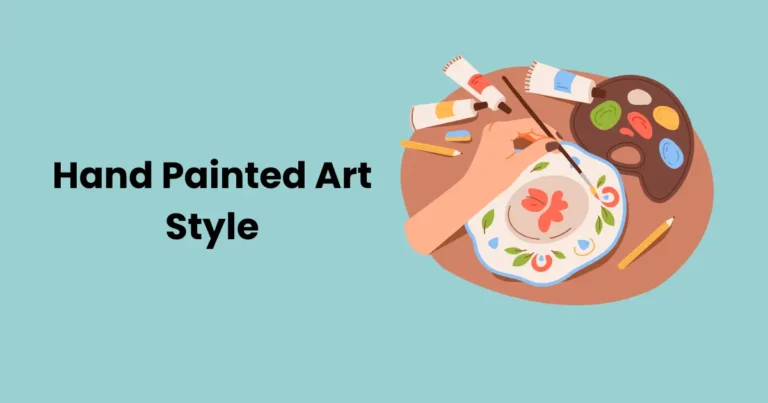Human Anatomy for Artists: Top benefits and tips for character anatomy
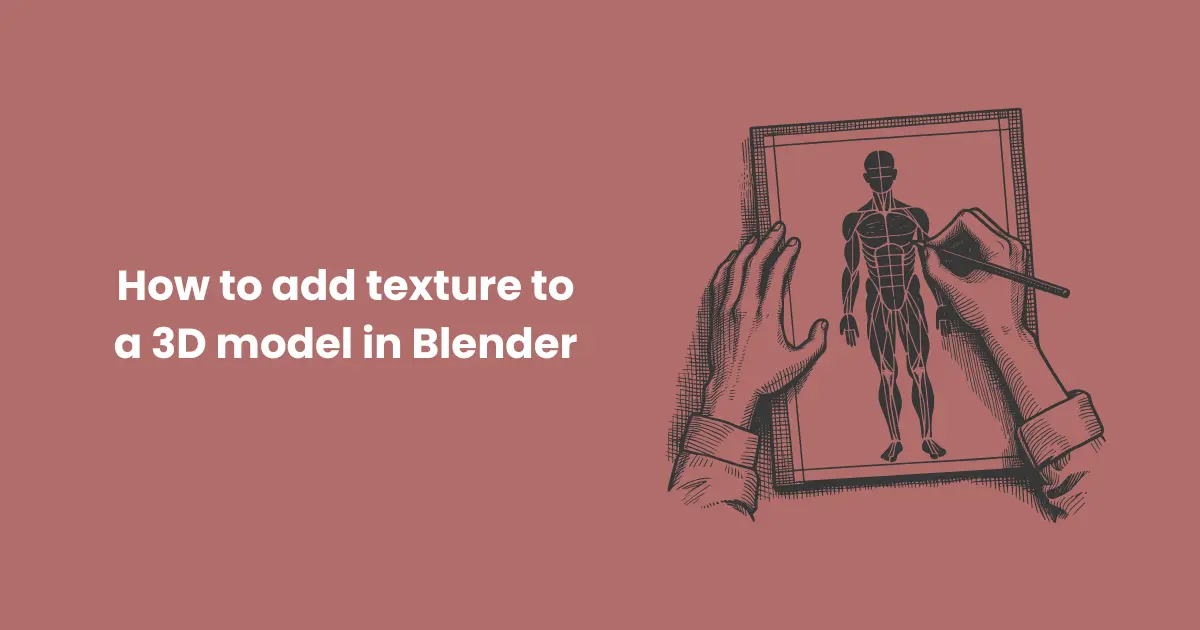
Contents
Human anatomy for artists is a fundamental cornerstone in creating lifelike and expressive art. Whether you are sketching a quick figure, painting a detailed portrait, or sculpting a character, understanding human anatomy helps bridge the gap between imagination and realism. It provides artists with the tools to represent the body accurately, even when experimenting with abstract styles.
Studying human anatomy for artists goes beyond memorizing muscles or bones; it’s about observing how the human body moves, bends, and reacts to different situations. This knowledge allows artists to add authenticity and depth to their work, making characters and figures more dynamic and relatable.
In this article, we’ll explore the critical elements of human anatomy for artists, focusing on proportions, skeletal structure, muscles, and movement. By the end, you’ll have a better understanding of how to incorporate anatomical accuracy into your artwork to elevate its impact and credibility.
Importance of Studying Human Anatomy for Artists
Understanding human anatomy is crucial for artists aiming to create realistic and expressive representations of the human body. Here’s why studying human anatomy for artists is so essential:

1. Enhances Realism in Art
Knowledge of human anatomy for artists depicts the human form more accurately. By understanding the structure of bones, muscles, and joints, artists can create lifelike figures that capture the essence of movement and posture, even in dynamic poses.
2. Improves Proportions and Balance
Proportions are the foundation of figure drawing. Studying anatomy provides insight into the relationships between different parts of the body, ensuring that your figures appear balanced and natural, whether standing still or in motion.
3. Enables Artistic Expression
An artist’s goal isn’t always to replicate reality but to communicate ideas and emotions. Knowledge of anatomy gives artists the freedom to exaggerate or abstract forms while maintaining a sense of believability. This is particularly valuable in styles like caricature, animation, and fantasy art.
4. Builds Confidence in Figure Drawing
Artists who understand anatomy approach figure drawing with confidence. They can draw from imagination, create unique characters, or stylize figures without relying heavily on references, as they understand how the body works in various positions.
5. Captures Movement and Gesture
Anatomy helps artists depict the flow and rhythm of the human form in motion. By studying how muscles stretch, contract, and interact, you can capture dynamic gestures and convey energy in your artwork.
Studying human anatomy for artists isn’t just about creating realistic art; it’s about understanding the language of the body. This knowledge empowers artists to explore endless creative possibilities while maintaining a strong connection to the human experience. Whether you’re a beginner or a seasoned professional, mastering anatomy is a lifelong journey that enhances every aspect of your craft.
Basics of Human Proportions
Mastering human proportions is a fundamental step in learning human anatomy for artists. Proportions are the key to creating figures that look natural and balanced, whether they are realistic, stylized, or exaggerated. Understanding the relationship between different parts of the body enables artists to maintain accuracy in their drawings. Here are the basics:
1. The Head-to-Body Ratio
The head-to-body ratio is a standard way to measure human proportions.
- Adults: On average, the human body is about 7.5 to 8 heads tall. Classical art often uses an 8-head model for an idealized figure, while real-life proportions can vary slightly.
- Children: Younger figures have smaller head-to-body ratios. For example, a toddler may be about 4 heads tall, while a teenager may be closer to 6-7 heads.
2. Division of the Human Figure
The human body can be broken down into measurable sections:
- Head: The top of the head to the chin is one unit.
- Torso: The torso, from the base of the neck to the pelvis, takes about 3 heads in height.
- Arms: The arms, when extended, reach down to the middle of the thigh. The hands are roughly the size of the face.
- Legs: The legs make up about half the total height, divided equally between the thighs and lower legs.
3. Symmetry and Asymmetry
While the body appears symmetrical, slight asymmetries add realism. For example:
- One shoulder may naturally sit higher than the other.
- The dominant hand side might show more muscle definition due to frequent use.
4. Understanding Proportion Variations
- Gender Differences: Men generally have broader shoulders and a narrower waist, while women tend to have wider hips and narrower shoulders.
- Body Types: People come in diverse shapes, such as ectomorphic (slim), mesomorphic (muscular), and endomorphic (stocky). Observing these differences helps create variety in your art.
5. Proportions in Perspective
Foreshortening occurs when the body is viewed from an angle, causing parts closer to the viewer to appear larger. Understanding proportions helps artists navigate perspective challenges and create believable depth in their compositions.
6. Practical Application
- Use Reference Points: Start with a rough skeleton or stick figure to determine the proportions.
- Practice Measuring: Use the head as a unit of measurement to guide the size of other body parts.
- Sketch Regularly: Practicing with models, photographs, or real-life subjects improves your understanding of proportion over time.
By grasping the basics of human proportions, artists gain a solid foundation to build on when creating realistic or stylized figures. Proportions are the blueprint that anchors your artwork, allowing you to focus on details, anatomy, and expression with confidence.
Muscles and Movement in Human Anatomy for Artists
Understanding muscles and their role in movement is essential for artists who want to create lifelike and dynamic figures. The human body is a complex system of muscles working in harmony to produce motion, and this knowledge helps artists portray strength, tension, and flexibility in their work.

1. The Role of Muscles in Art
Muscles define the contours and form of the human body. By studying muscles, artists can:
- Depict realistic tension and relaxation.
- Illustrate dynamic poses and movements.
- Add volume and depth to their figures.
2. Key Muscle Groups for Artists
While the human body has over 600 muscles, artists focus on the major groups visible on the surface.
- Head and Neck Muscles:
- Frontalis: The forehead muscle that raises the eyebrows.
- Sternocleidomastoid: Extends from the base of the skull to the collarbone, aiding in head movement and tilting.
- Torso Muscles:
- Pectoralis Major: The chest muscle that controls arm movement.
- Rectus Abdominis: Commonly known as the “abs,” these muscles define the torso and are crucial in bending the body.
- Latissimus Dorsi: Large back muscles contribute to arm movement and body posture.
- Arm and Shoulder Muscles:
- Deltoid: The shoulder muscle that allows arm rotation and lifting.
- Biceps and Triceps: Found on the upper arm, these muscles control forearm movement.
- Leg Muscles:
- Quadriceps: The large muscles at the front of the thigh, essential for walking, running, and jumping.
- Hamstrings: Located at the back of the thigh, they enable knee bending and hip extension.
- Gastrocnemius: The prominent calf muscle that aids in foot movement.
3. Understanding Muscle Movement
- Tension and Relaxation: Muscles work in pairs; when one contracts, the opposing muscle relaxes. For example, the biceps contract while the triceps relax during arm flexion.
- Stretching and Compression: In dynamic poses, muscles on the extended side stretch, while those on the compressed side bunch up, creating realistic depth.
- Gesture and Flow: Muscles follow the natural curves of the body, forming S-shaped lines that give figures rhythm and energy.
4. Capturing Motion
When depicting motion, artists should focus on:
- Weight Distribution: Highlight how muscles shift under tension to maintain balance.
- Anatomical Landmarks: Study prominent areas like the collarbone, ribcage, and knees to anchor movements.
- Foreshortening: Use muscle anatomy to guide the depiction of depth and perspective in dynamic poses.
5. Practice Techniques for Artists
- Sketch Muscle Groups: Study anatomical diagrams and break down the body into simplified shapes.
- Observe Real Life: Watch athletes or dancers to see how muscles engage during movement.
- Work with Models: Life drawing classes are invaluable for observing how muscles interact in various poses.
By understanding muscles and movement, artists can create compelling figures that convey action, emotion, and realism. Incorporating this knowledge into your work brings characters to life, giving them vitality and presence.
Hands and Feet: The Artistic Challenge
For many artists, hands and feet are some of the most challenging parts of the human body to draw. Their intricate structures, range of motion, and expressive potential make them both fascinating and difficult to master. Understanding their anatomy and movement is key to overcoming these challenges and bringing realism and expressiveness to your art.

1. Anatomy of Hands
The human hand is a marvel of structure and functionality.
Bones and Joints:
- The hand consists of 27 bones: the carpals (wrist), metacarpals (palm), and phalanges (fingers).
- Each finger has three phalanges, except the thumb, which has two.
- Joints, including the knuckles and smaller finger joints, provide flexibility and movement.
Muscles and Tendons:
- The hand’s movement is controlled by muscles in the forearm, with tendons running through the wrist to the fingers.
- Small intrinsic muscles in the hand allow for fine motor skills and subtle movements.
Key Considerations for Artists:
- The palm is slightly cupped.
- Fingers taper toward the tips and are not perfectly straight; they curve slightly.
- The thumb is opposable and moves independently of the fingers, adding complexity to its depiction.
2. Anatomy of Feet
Feet, like hands, are intricate and serve as the foundation of the human body.
Bones and Joints:
- The foot contains 26 bones: the tarsals (ankle and heel), metatarsals (arch), and phalanges (toes).
- The big toe, like the thumb, has two phalanges, while the other toes have three.
Arches and Structure:
- The foot’s arches provide balance and support.
- The heel and ball of the foot bear most of the body’s weight.
Key Considerations for Artists:
- Feet are rarely flat; they often form subtle angles and curves.
- Toes are shorter and more uniform in size compared to fingers.
- The ankle and Achilles tendon add definition to the foot’s shape.
3. Why Hands and Feet Are Challenging
- Complexity of Structure: Their detailed anatomy and wide range of motion make them difficult to simplify.
- Expressive Nature: Hands can convey emotion, action, and personality, while feet ground the figure and affect its posture.
- Perspective Issues: Hands and feet often appear foreshortened or in tricky angles, requiring careful observation.
4. Tips for Drawing Hands and Feet
- Simplify Shapes: Break hands and feet into basic geometric forms (cubes, cylinders, and spheres) to map out their proportions.
- Focus on Gesture: Capture the overall movement and flow before refining details.
- Observe References: Study photographs, anatomical models, or your own hands and feet in different poses.
- Practice Foreshortening: Experiment with drawing hands and feet from various angles to improve perspective skills.
- Detail the Landmarks: Pay attention to visible knuckles, tendons, and the curvature of the nails to add realism.
5. Common Mistakes to Avoid
- Flat Fingers and Toes: Remember their rounded, tapered structure.
- Over-Symmetry: Hands and feet are naturally asymmetrical; avoid making them look too uniform.
- Ignoring Perspective: Hands and feet rarely face the viewer head-on, so practice capturing depth.
By dedicating time and effort to understanding hands and feet, you’ll overcome their challenges and bring greater authenticity and expression to your art. Mastery of these features elevates your work, showcasing your technical skill and attention to detail.
Facial Anatomy and Expressions
Facial anatomy and expressions are vital aspects of human anatomy for artists. The face serves as the primary medium for conveying emotions and personality, making it one of the most impactful areas to master. Understanding the underlying structure of the face and how it changes with expressions enables artists to create lifelike, emotive portraits and characters.

1. Anatomy of the Face
The face is a complex structure made up of bones, muscles, and soft tissues, all working together to form expressions.
Bones of the Skull:
- Cranium: Provides the base structure for the head and determines the shape of the forehead.
- Zygomatic Bones: Known as the cheekbones, they influence the width and contour of the face.
- Mandible: The jawbone, is responsible for movements like talking and chewing.
Facial Muscles:
These muscles control expression and shape the face’s contours. Key muscles include:
- Frontalis: Raises the eyebrows and wrinkles the forehead.
- Orbicularis Oculi: Encircles the eyes, creating squinting or closing expressions.
- Zygomatic Major: Pulls the corners of the mouth upward for smiling.
- Orbicularis Oris: Encircles the mouth, shaping the lips for speech and expressions.
- Masseter: Controls jaw movement and adds structure to the lower face.
2. Understanding Proportions of the Face
Accurate proportions are essential for creating realistic faces. Common guidelines include:
- The face is roughly divided into thirds:
- From the hairline to the eyebrows.
- From the eyebrows to the bottom of the nose.
- From the nose to the chin.
- The eyes are approximately one eye-width apart.
- The ears align with the eyebrows and the bottom of the nose.
3. Expressions and Emotions
Facial expressions are created by the coordinated action of muscles, altering the face’s features. Mastering these changes is key to depicting emotion effectively.
The Six Basic Emotions:
Psychologists identify six core expressions: happiness, sadness, anger, fear, surprise, and disgust. Each involves specific muscle actions:
- Happiness: Raised cheeks, upward mouth corners, and crow’s feet around the eyes.
- Sadness: Downward-turned mouth corners and raised inner eyebrows.
- Anger: Furrowed brows, tightened lips, and flared nostrils.
- Fear: Wide eyes, raised brows, and slightly open mouth.
- Surprise: Raised brows, wide-open eyes, and an oval-shaped mouth.
- Disgust: Wrinkled nose, raised upper lip, and narrowed eyes.
- Subtle Expressions: Beyond the basics, slight changes in muscle tension can convey nuances like skepticism, amusement, or determination.
4. Common Challenges in Drawing Faces
- Symmetry vs. Asymmetry: While the face may appear symmetrical, slight asymmetry adds realism. For example, one eye might sit slightly higher or one corner of the mouth may curve more than the other.
- Overemphasis on Details: Beginners often focus too much on individual features instead of the overall expression. Focus on the mood first, then refine details.
- Perspective and Angles: Capturing the face from different angles (profile, three-quarters view, etc.) requires an understanding of foreshortening and structure.
5. Tips for Mastering Facial Anatomy and Expressions
- Study the Skull: Understanding the skull helps you anchor features and proportions.
- Observe Real Faces: Analyze how expressions change during conversations or in photos.
- Simplify First: Break the face into basic shapes (oval for the head, circles for the eyes, etc.) before adding details.
- Practice Gesture Sketches: Quickly sketch different expressions to focus on capturing emotions rather than perfection.
- Use References: Study photographs, videos, or mirrors to observe real expressions.
Common Mistakes When Drawing Human Anatomy
Drawing human anatomy is a challenging but rewarding skill. While practice is key to improvement, being aware of common mistakes can help you refine your techniques and avoid pitfalls. Here’s a breakdown of the most frequent errors and how to address them.

1. Ignoring Proportions
The Mistake: Disproportionate body parts, such as oversized hands, tiny heads, or excessively long limbs.
The Fix:
- Use the head-to-body ratio to measure proportions (e.g., the average adult is 7.5 to 8 heads tall).
- Break the body into sections (torso, arms, legs) and sketch them lightly before adding details.
2. Overlooking Perspective
The Mistake: Figures appear flat or distorted when drawn in dynamic poses or at unusual angles.
The Fix:
- Study foreshortening, which makes objects closer to the viewer appear larger.
- Use reference images or 3D models to understand how body parts interact with perspective.
3. Stiff Poses
The Mistake: Figures lack fluidity and appear unnatural or rigid.
The Fix:
- Focus on gesture drawing, which captures the flow and movement of the figure.
- Practice quick sketches (1-2 minutes) to focus on motion rather than details.
4. Over-Detailing Early On
The Mistake: Adding intricate details like muscles or facial features before establishing the figure’s basic structure.
The Fix:
- Start with basic shapes to map out the pose and proportions.
- Gradually refine the structure before adding details.
5. Neglecting Anatomy Basics
The Mistake: Drawing muscles, bones, or joints inaccurately due to a lack of anatomical knowledge.
The Fix:
- Study human anatomy for artists, focusing on major bones, muscles, and joints.
- Use anatomy books, and online resources, or take life-drawing classes to deepen your understanding.
By recognizing and correcting these common mistakes, you can elevate your skill in drawing human anatomy. Mastery comes with practice, observation, and a commitment to refining your craft.
Tools and Resources for Mastering Human Anatomy
Mastering human anatomy requires the right tools and resources to guide your learning and improve your skills. Whether you’re a beginner or an experienced artist, these tools can help you understand proportions, movement, and structure while building confidence in your art.

1. Drawing Tools for Anatomy Study
Sketchbooks and Pencils:
- Use a high-quality sketchbook and pencils ranging from HB to 6B for detailed studies and shading.
- Mechanical pencils are great for precise line work.
- Erasers:
- A kneaded eraser is excellent for lifting graphite and refining highlights.
- Precision erasers work well for small details.
- Digital Tools:
- Drawing tablets like Wacom or iPads with Procreate provide flexibility for anatomy studies.
- Software like Photoshop or Clip Studio Paint offers layers, brushes, and easy corrections.
2. Physical References
Anatomy Books for Artists:
- “Anatomy for Sculptors” by Uldis Zarins: Focuses on visual understanding with 3D diagrams.
- “Atlas of Human Anatomy for the Artist” by Stephen Rogers Peck: A classic resource for anatomy sketches and explanations.
- “Figure Drawing for All It’s Worth” by Andrew Loomis: Covers proportions, poses, and the human form.
Skeleton Models:
- Invest in a physical skeleton model to study bone structure and proportions.
- Smaller desktop models are affordable and portable.
- Mannequins:
- Wooden or plastic poseable mannequins help artists practice proportion and movement.
- Advanced options include articulated mannequins with realistic joints.
3. Digital and 3D Resources
3D Anatomy Apps:
- Zygote Body: A free online tool to explore anatomy in 3D.
- ArtPose: A mobile app that allows you to pose 3D models for reference.
- Human Anatomy Atlas: A comprehensive app for understanding internal and external anatomy.
3D Models for Artists:
- Websites like Sketchfab or TurboSquid offer downloadable human models for anatomy studies.
- Blender and other 3D software allow you to manipulate and pose models in custom ways.
Virtual Life Drawing:
- Platforms like Croquis Café or Line of Action provide virtual figure-drawing sessions with timed poses.
4. Online Resources and Tutorials
YouTube Channels:
- Proko: Offers in-depth anatomy tutorials tailored for artists.
- Sinix Design: Focuses on stylized anatomy and creative figure drawing.
- Modern Day James: Covers anatomy, movement, and dynamic poses.
Courses and Classes:
- Schoolism: Offers online classes in anatomy for artists.
- New Masters Academy: Features comprehensive anatomy lessons and live model references.
- Skillshare: Provides beginner-friendly courses on figure drawing and anatomy.
5. Practice Resources
Life Drawing Classes:
- Attend local art classes or workshops with live models for hands-on experience.
- Virtual life-drawing sessions are an alternative when in-person classes aren’t accessible.
Photo References:
- Websites like Quick Poses, Pexels, or Unsplash offer free figure reference photos.
- Use photography books or create your reference library with pictures of yourself or others.
Gesture Drawing Practice:
- Use tools like Line of Action to practice quick, timed sketches focusing on movement and flow.
Conclusion
Mastering human anatomy is a transformative journey for artists, enabling them to create lifelike and emotionally resonant works. By understanding the body’s structure, proportions, and movements, artists can breathe authenticity into their creations, whether they’re drawing realistic portraits or stylized characters. The study of anatomy is not merely about replicating physical forms but also about grasping how the human body expresses emotions, interacts with its environment, and conveys stories through poses and gestures. This depth of understanding allows artists to connect with their audience on a profound visual and emotional level.
While the path to mastering human anatomy can be challenging, the right tools, resources, and consistent practice make it achievable. From leveraging anatomy books and digital tools to attending life-drawing classes, artists have a wealth of options to hone their skills. Over time, the insights gained from studying anatomy enhance not only technical accuracy but also creativity and artistic expression. By embracing the learning process and seeking continuous improvement, artists can unlock their full potential, producing work that captivates, inspires, and endures.

